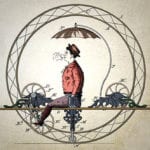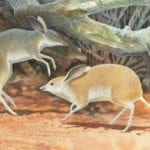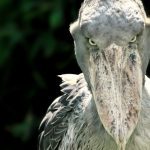 Politics
Politics  Politics
Politics  Weird Stuff
Weird Stuff 10 Freaky Times When Famous Body Parts Were Stolen
 Miscellaneous
Miscellaneous 10 Interesting Things Manufacturers Stopped Making and Why
 Gaming
Gaming 10 Funny Tutorials in Games
 History
History 10 Fascinating Little-Known Events in Mexican History
 Facts
Facts 10 Things You May Not Know about the Statue of Liberty
 Movies and TV
Movies and TV 10 Movie Adaptions That Brought Popular Songs to Life
 Health
Health 10 Miraculous Advances Toward Curing Incurable Diseases
 Miscellaneous
Miscellaneous 10 Undeniable Signs That People’s Views of Mushrooms Are Changing
 Animals
Animals 10 Strange Attempts to Smuggle Animals
 Politics
Politics 10 Countries Where Religion and Politics Are Inseparable
 Weird Stuff
Weird Stuff 10 Freaky Times When Famous Body Parts Were Stolen
 Miscellaneous
Miscellaneous 10 Interesting Things Manufacturers Stopped Making and Why
Who's Behind Listverse?

Jamie Frater
Head Editor
Jamie founded Listverse due to an insatiable desire to share fascinating, obscure, and bizarre facts. He has been a guest speaker on numerous national radio and television stations and is a five time published author.
More About Us Gaming
Gaming 10 Funny Tutorials in Games
 History
History 10 Fascinating Little-Known Events in Mexican History
 Facts
Facts 10 Things You May Not Know about the Statue of Liberty
 Movies and TV
Movies and TV 10 Movie Adaptions That Brought Popular Songs to Life
 Health
Health 10 Miraculous Advances Toward Curing Incurable Diseases
 Miscellaneous
Miscellaneous 10 Undeniable Signs That People’s Views of Mushrooms Are Changing
 Animals
Animals 10 Strange Attempts to Smuggle Animals
10 Species That Are the Last of Their Kind
There are millions of different species on this planet. And from insects to whales, all of those species are a small part of a tangled web of life that took millions of years to create. Most of those animals still have relatives that branched off and survive today. However, there are also some animals that are a bit lonelier and represent the last of their genus and evolutionary branch.
Take humans, for example. We have no living species from our genus that is still alive and among us today. Our closest living relative is the chimpanzee, followed by the bonobo. But we’re not alone in our oneness. There are other animals out there that are the last remaining species in their genus, whether due to natural selection or human intervention. Some of these animals can trace their lineage back millions of years, while others are relatively new on the evolutionary time scale. Here is a list of 10 of the most unique.
Related: 10 Endangered Animals That Could Become Extinct In A Few Years
10 Platypus
Ornithorhynchus anatinus is a furry, odd-looking aquatic mammal and one of the most recognizable species in the world. The platypus, native to eastern Australia, has a duckbill like a bird, hair like a mammal, and lays eggs like a reptile. But the platypus has a few other interesting traits that could represent the divergent evolution of reptiles and mammals. It is estimated that mammals diverged from reptiles around 280 million years ago, meaning the platypus is likely one of the last living relatives from that branch of the family tree. It is also a threatened species.
Some of the traits that set this animal apart from most mammals include its ability to use venom, its ability to use electrical currents to seek prey, and its use of eggs to give birth. Species like the platypus—a sort of mix-match that represents an important point in the timeline of evolution—can also provide scientists with important new discoveries. Scientists have experimented with the platypus’s milk to create antibiotics and its venom to find a potential cure for diabetes.[1]
9 Honey Badger
Honey badgers, or Mellivora capensis, are some of the scrappiest animals out there. Videos often show the undersized creature flinging itself headfirst toward a lion or other carnivore that comes too close. Maybe, this is the reason the tiny animal has managed to survive as the last in its genus.
But the creature also has some other interesting adaptations that help it survive when it faces off with larger predators. For example, the animal has a loose layer of thick skin around its neck that allows it to twist and twirl back toward would-be attackers if they try to grab the animal. A study also found that porcupine quills and dog bites rarely penetrated this layer. The honey badger also has a large brain for an animal its size and has been documented using tools.
While not usually a picky eater, researchers found that the honey badger has some immunity to snake venom, which makes up around 25% of its diet. If stung, the honey badger will just be knocked out for a couple of hours before waking up to continue its meal.[2]
8 Koala
Koalas are one of Australia’s most iconic species. The small marsupial’s scientific name is actually Phascolarctos cinereus, and it is closely related to kangaroos and wombats. Scientists suspect that koalas probably evolved to almost exclusively eat eucalyptus leaves, which are native to Australia. Koalas are also the only other animal, outside of primates, to have fingerprints like humans. These fingerprints evolved separately from primates, which has led scientists to think that fingerprints’ evolutionary function was to help animals clasp on to things like trees.
Despite their iconic appearance, koalas face an uncertain future in the wild. The Australian government declared koalas endangered in February 2022 due to wildfires, drought, and habitat loss. Researchers suspect that their populations in New Queensland and New South Wales have decreased by some 50% in the last two decades and that the entire country lost around 30% of its entire koala population between 2018 and 2022.[3]
7 Aardvark
Aardvarks are a highly specialized, if a little peculiar-looking, species actually closely related to elephants. They are medium-sized, burrowing, nocturnal mammal native to Africa. Though not threatened or endangered, their numbers are declining.
These little guys use their long snouts and stout claws to tear away termite mounds and suck up the critters inside. Because of this, aardvarks are sometimes referred to as antbears. Though they are the last of their genus today—Orycteropus—fossil records show that they used to have closely related cousins roaming around Europe and into Asia. Scientists think that the aardvark’s branch split from other primitive ungulates (animals like elephants and manatees) around some 54 million years ago.[4]
6 Dugong
Dugongs are a marine mammal in the order Sirenia, which includes three species of manatees. Their scientific name is Dugong dugon, which once contained many different kinds of dugongs. The most recent of which was the Stellar’s sea cow that was wiped out by humans in the 1700s. Today, the dugong is believed to be vulnerable to extinction, though many areas do protect the species through conservation and protection laws.
These gentle giants can grow up to 13 feet in length and mostly feed on seagrass in the Indian and eastern Pacific oceans. Like the aardvark, dugongs are thought to descend from primitive ungulates like elephants. The other recent member of the dugong’s genus, the Stellar’s sea cows, lived in comparatively colder waters and weren’t known to science until 1741. Scientists believe the now-extinct sea cow could reach lengths of over 30 feet, but they were unfortunately wiped out only 30 years after their discovery.[5]
5 Narwhal
The narwhal’s scientific name is Monodon monoceros, which means”one tooth, one horn.” But their common name might be a bit more interesting, if less apt. It comes from the old Norse prefix”na” meaning corpse and”nva” meaning whale: corpse whale. This was because their skin color resembled a drowned sailor (Link 14). Sometimes also called the “unicorn of the seas,” narwhals spend their life in the cold, deep waters of the Arctic. Because of this, not too much is known about them.
We do know that their closest living relative is the beluga whale, which is the only other living species in the family of Monodontidae. These two whale species sometimes interbreed. Scientists also suspect that the whale’s signature tusk may act as a sensory organ due to all the nerves inside. Narwhals are also some of the deepest diving whales, plunging some 4,500 feet in search of food.[6]
4 Hirola
The hirola, a large antelope, is the last living member of the genus Beatragus. Despite this, the animal is critically endangered in the wild, with only about 500 left as of 2017. Scientists think the genus may have diverged from animals like the wildebeest and topi around 7 million years ago.
The antelope is found only in a small area along the Somalia-Kenya border, and it has seen its numbers dive by about 90% since 1980. However, there is hope for the horned animal. Some locals believe the animal carries with it spiritual significance related to herding and fear if it goes, so too will the cattle. Starting in 2008, conservation efforts began to set up predation-free areas with the community’s involvement. Today, their numbers are reportedly stable, and community initiatives have gained traction.[7]
3 Plains-Wanderer
The only bird on our list and the sole surviving member of the genus Pedionomidae, the plains-wanderer is a quirky little bird. It is endemic to Australia, with the majority of the remaining population found in the Riverina region of New South Wales. Although it populates mostly grasslands, the bird is actually related to gulls and other shorebirds. The bird’s closest living relative is a shorebird native to South America, which has led scientists to trace the plains-wanderer’s evolutionary lineage back to when the two continents were connected some 60 million years ago.
Today, the tiny bird is critically endangered in the wild, with only around 250 to 1,000 remaining. These birds aren’t great flyers, so their first instinct is to run away from danger. The plains-wanderer is threatened by predation from foxes and the cultivation of grassland for farming and herding.[8]
2 Maned Wolf
Chrysocyon brachyurus, or the maned wolf, is the largest canid in South America. Though its reddish color resembles a fox, this guy is neither wolf nor fox but is actually a distinct species. The maned wolf evolved to live in grass savannahs—which could explain its long legs—and they mark their territory with powerful-smelling urine. Not a lot is known about how these animals breed because they are mostly nocturnal, but scientists think pairs may live independently within the same territory and only interact during breeding.
Due to this animal being so distinct from other canids, researchers think it may have been the only canid in South America to survive the late Pleistocene extinction. Fossils of the maned wolf have been found, dating to the Holocene and the late Pleistocene periods.[9]
1 Black Caiman
The black caiman is the largest of the Alligatoridae and the last of its genus, Melanosuchus. Found throughout central South America, these large alligators can grow up to 16 feet in length and are the top predators in the rainforest. When flooding occurs, black caimans will spread out with the floodwaters before returning to permanent lakes and rivers during the dry season.
Though once extremely common throughout its natural range, hunting in the 1940s and 1950s severely depleted the animal’s numbers. Though many types of caimans were hunted, the black caiman was prized for its size and the quality of the leather it produced. Today, hunting has largely been regulated, and there are some strong populations of black caiman in the wild, though it is estimated that they are not nearly as abundant as they once were.[10]








